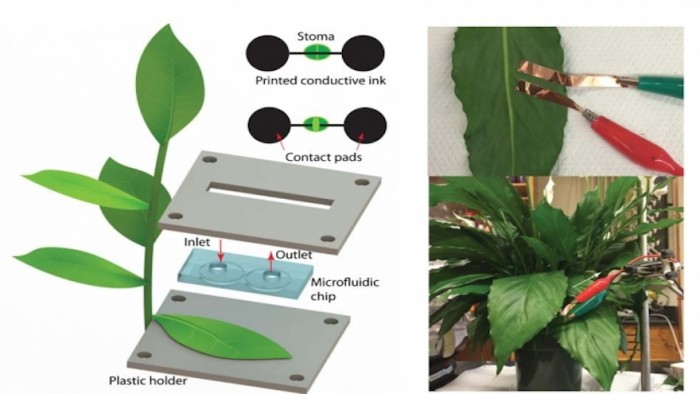
These sensors could help farmers detect a drought before it happens.
New technology created by MIT researchers is able to use previously unidentifiable stress signals to detect when plants are experiencing a water shortage. The early warning system could one day save everything from neglected houseplants to agriculture.
Headed by a chemical engineering professor Michael Strano, the MIT team invented a “light-conductive ink”, which has been tested on the surface of a plant’s leaf.
Once printed on the plant, a circuit is formed over microscopic pores called stomata. Using the ink, the researchers were able to observe how fast or slow the pores close when the plant needs to retain water.
By measuring the opening and closing of the pores, real-time data about the water levels in a plant is collected. They monitored the breaking and connecting of the conducting ink under both normal and dry conditions over a number of days.
This is groundbreaking because we usually only identify a drought when it's too late.
“This appears to be the earliest indicator of drought that we have for agricultural applications,” Strano told MIT press. “It’s hard to get this information any other way. You can put sensors into the soil, or you can do satellite imaging and mapping, but you never really know what a particular plant is detecting as the water potential.”
Plants experience water stress when there is limited water supply to the roots. This usually happens during a drought – a topic that hits close to home due to the recent water crisis in Cape Town.
The MIT team is now working on a new way to apply the electronic circuits by simply placing a sticker on the surface of the leaf.
“It could have big implications for farming, especially with climate change, where you will have water shortages and changes in environmental temperatures,” said Volodymyr Koman, the lead author of the study.
Read more on design thinking:
Taiwanese students design foldable bone-fracture boards for disaster relief
Robotic traffic officers direct cars on Kinshasa’s roads
Scientists design liquid barrier to protect coral reefs from UV damage







